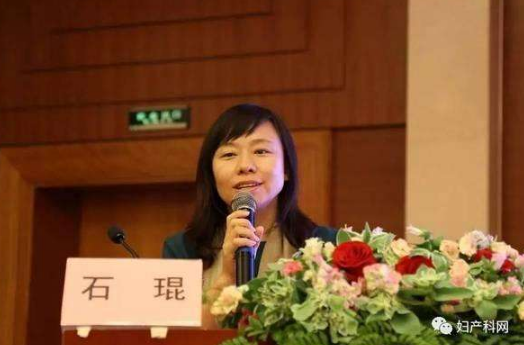How to achieve the maximum therapeutic goal with minimal trauma, minimize surgical trauma, and even achieve non-invasive or "invasive - minimally invasive - non-invasive", has always been the highest level of surgery, and the ideal and pursuit of surgeons. The endoscope introduces light into the various "corners" of the human body, which is an extension of the surgeon's vision; the endoscopic instrument of the laparoscopic surgical instrument cuts the knife-cutting force into the field and is an extension of the surgeon's arm. Laparoscopic surgery is a revolution in surgical technology, and its importance lies in benefiting patients.

Department of Obstetrics and Gynecology, Second Affiliated Hospital of Harbin Medical University
(1) Development history of laparoscopy
From the concept of endoscopy to the widespread use in clinical practice, the development of laparoscopy has gone through a long and tortuous process. In 1795, Bozzine of Germany first proposed the idea of ​​endoscopy, but due to limited technology at that time, it was only possible to observe the rectum and uterus with a straight endoscope. In 1901, Kelling used the cystoscope invented by Nitze to directly insert it into the abdominal cavity through the abdominal wall and called it "koelioskopie", which is a body cavity endoscopy. In 1910, Sweden's Jacobaeus first reported the use of laparoscopy for the abdominal cavity, chest and heart of the human body, completing the first true laparoscopic examination in human history. Soon, laparoscopic Professor Kelling reported 45 cases of laparoscopic examination, describing the shape of laparoscopic tumors and tuberculosis in human peritoneal cavity. Jacoaeus, Kelling, and Von Ott have made outstanding contributions to the clinical application of laparoscopic surgery, known as the father of laparoscopy. In 1936, Boesch of Germany first used laparoscopic monopolar coagulation for tubal sterilization. In 1985, Reich H completed the first laparoscopic hysterectomy. Since then, laparoscopic surgery has entered a period of rapid development. Hysteroscopy So far, gynecological laparoscopy has been widely used in the treatment of uterus from the 1960s to the 1970s with diagnostic laparoscopic and laparoscopic electrocoagulation. Membrane benign diseases such as membrane ectopic disease, ectopic pregnancy, pelvic inflammatory mass, ovarian cysts. After the 1990s, the application of laparoscopy was further broadened. In 1989, Querleu was the first to perform laparoscopic pelvic lymphadenectomy, pelvic reconstruction and early gynecologic malignancies. It can also be performed under laparoscopy.
(B) the scope of application of laparoscopy in the diagnosis and treatment of gynecological diseases
Gynecological laparoscopy is the first application of clamps to simpler diseases such as: laparoscopic infertility (level 1 surgery), ectopic pregnancy surgery, general abdominal adhesions, tubal dredge, ovarian cysts (level 2 surgery) to complex Grade 3 surgery (uterine myomectomy, total hysterectomy, subtotal hysterectomy, etc.) and grade 4 surgery (endometriosis, gynecologic malignancies, etc.).
The successful implementation of laparoscopic hysterectomy marks the recognition of the value of laparoscopic techniques in the treatment of gynecological diseases, and its widespread use in the treatment of gynecologic malignancies in the past decade has further expanded its range of applications in gynecological diseases. At the same time, it also fully reflects the value and importance of laparoscopic technology. With the successful implementation of laparoscopic extensive hysterectomy, pelvic lymphadenectomy and other difficult procedures, it can be applied to the treatment of gynecological malignancies such as cervical cancer and endometrial cancer, and The accumulation of cases and the prolongation of observation and follow-up time showed that the clinical effect was similar to that of traditional open surgery, but the complications were lower than traditional surgery, and it has gradually been recognized by gynaecologists including gynecologic oncologists.
Laparoscopic sacral fixation, Burch and other operations can be used to treat pelvic floor dysfunction in young patients with vaginal pull hook. It is a new category of laparoscopic treatment of gynecological diseases. Laparoscopic combined treatment (uterine mediastinum, vaginal oblique septum, congenital absence of vagina, etc.) genital malformations and defects have invisible small recovery, reducing injuries and other unparalleled advantages.
(3) Advantages, disadvantages and precautions of laparoscopy in the diagnosis and treatment of gynecological diseases
From the surgical incision point of view, several 0.5cm~1.0cm incisions replace the traditional large surgical incision, which is undoubtedly welcomed by patients and doctors; and the magnification of laparoscopic surgery makes the surgical field more clear; the application of advanced electrical equipment makes Surgery is faster and simpler; fewer human interventions in the abdominal cavity result in significant reductions in postoperative adhesions, etc.; these are all advantages of laparoscopy. But there is no doubt that there are obvious deficiencies at the same time. Since the laparoscopic image is transmitted on the TV through the optical fiber, the image observed by the doctor is two-dimensional, lacking the stereoscopic effect, increasing the difficulty of the operation of the flushing pump. . Second, the process of forming pneumoperitoneum and puncture is blind, which is easy to cause damage to abdominal organs, especially large blood vessels, and even lead to death of patients. The wide application of the third intraoperative electrical device has correspondingly increased the occurrence of complications such as accidental injury to blood vessels, thermal damage and the like. This brings new challenges to obstetricians, solid laparotomy skills, systematic endoscopic training, and familiarity with possible complications, which will avoid or reduce complications as much as possible.
There is no doubt that young laparoscopic techniques have brought new ideas, new ways and new revolutionary changes to the treatment of gynecological diseases. Together with ancient vaginal surgery, it will become the main force for minimally invasive treatment of gynecological diseases. Standardized, individualized laparoscopic surgical treatment will bring greater benefits and minimal damage to patients.
Submersible Cable,Submersible Flat Cable,Rubber Insulation Electric Welding Cable,Waterproof Cable Rubber
Ruitian Cable CO.,LTD. , https://www.hbruitiancable.com
